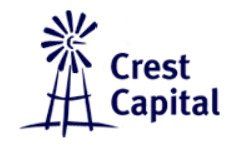Blog Layout
A capital partner in the Perth property development market
Marius Grobbelaar • March 31, 2020
Perth Property Development Finance
Development is all about funding, it is a very capital-intensive business, and until the developer has solved its access to the various forms of capital required to fund a project it will remain a concept.
Whilst the development approval system is often regarded as one of the major barriers to housing supply, in reality, the vast majority of potential projects will not get close to the development approval phase because they are either not financially feasible or, if they are, the developer cannot secure the necessary finance to undertake the project.
Non-bank lenders and mortgage funds are proving increasingly popular alternatives in the Perth property development landscape, as well as capital partners such as Crest Capital Asset Management (CCAM), who offer unique project-focused solutions.
The state of development finance
Add your custom HTML here
In the period since the global financial crisis regulation and other impediments have diminished credit availability. The biggest impact has been the restrictions placed on the participation of banks and other deposit-taking institutions in development finance.
As a result of this process of bank disintermediation a funding gap has occurred estimated to be in the order of $30 billion a year – this gap is increasingly being filled by non-bank lenders and mortgage funds, but at a higher price point reflective of their business models and higher cost of funding.
A decade after the GFC, regulation continues to inhibit traditional lenders and there are reasons to believe the reduction in the market share of banks in development finance will fall much further still, as fewer developers and fewer projects meet their stringent requirements.
The biggest effect of this funding gap has been felt at the lower end of the development market, developers with projects under $5m as well as land developers.
Development business models in a lower-liquidity landscape
Obtaining bank finance for development used to be much simpler. In the new lending landscape bank funding requires more equity, high pre-sale levels and meeting a raft of onerous credit requirements.
Developers have had to adjust to the scarcity of funding and increased equity requirements. Some have adopted business models that recognised the importance of access to all forms of capital and have incorporated capital raising and its regulatory licensing regime as an intrinsic part of their business model. Others have evolved to taking on larger projects, or, on the other end of the spectrum, scaling down the number of projects they target every year to enable them to preserve sufficient equity for each project.
With the exception of a small minority, developers have had to adjust their business models to accommodate higher funding costs to get projects commenced.
A capital partner for developers
The vast number of developers would still prefer a focus on their core skills – finding good development opportunities and executing on the project.
A capital finance partner such as CCAM uses a project-focused initial assessment. If the project survives the initial review, we will work with the client to attempt a solution of the capital requirements.
Whilst the majority of its funds are advanced as senior debt, CCAM understands that many viable opportunities do not make it off the drawing board – preferring early engagement with prospective clients to help shape the funding outcomes using flexible capital sources.
In this way, developers can stay focused on development and leave the capital stack to an experienced partner.
Contact CCAM today
for more in-depth information on property development options available or view Perth property finance case studies here. We welcome any enquiry and will assist with a more detailed feasibility analysis.
Newsletter Signup
Thank you for subscribing to the Crest Capital newsletter
Oops, there was an error subscribing to our newsletter.
Please try again later.

By Marius Grobbelaar
•
October 23, 2020
The non-bank industry is often ignored when brokers and advisors make funding recommendations to their clients. The cost of capital available to non-bank lenders is substantially higher than the major banks and an assessment on funding costs only will more often than not favour the majors. But what about the opportunity cost? Crest Capital Asset Management (Crest Capital) has compiled a case study of a transaction that involved one of its clients to illustrate the opportunity cost:
Contact Crest Capital for Property Development Finance Today
CALL
© 2025
Crest Capital Asset Management | Privacy Policy
Site by Helium Marketing | Digital Marketing by
Living Online

